US Experimental & Proto Fight
US Experimental & Proto Fight
US Experimental & Proto Fight
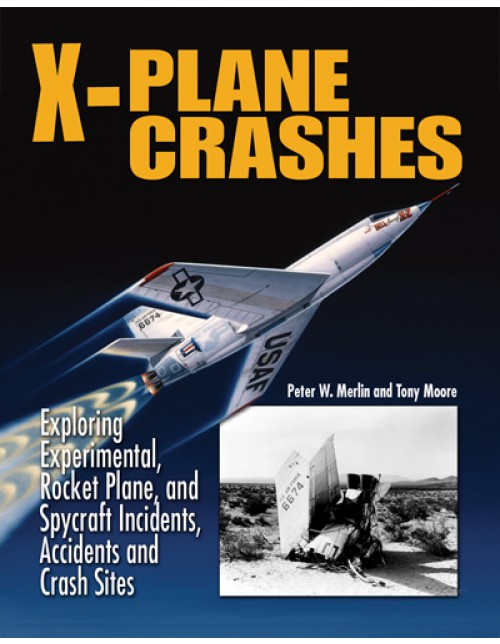
Known as “The X-Hunters,” authors Peter W. Merlin and Tony Moore have located more than 100 crash sites of exotic aircraft from Edwards air Force Base and Area 51. Together, they have recovered parts of supersonic rocket planes, stealthy spy craft, and vehicles that have reached the edge of space. Each story in the book profiles an unusual aircraft and the brave men who flew it. The authors examine the contributing causes of each crash and use then-and-now photographs to illustrate their findings. The stories end with The X-Hunters’ search for the crash site and what they discovered. Each adventure combines C.S.I.-type skills with X-Files persistence, with a dash of Indiana Jones for adventure. Aircraft profiled include the YB-49 and a pair of N9M flying wings, X-1A, X-1D, XB-51, XB-70, SR-71, YF-12, U-2 prototype, and many more.
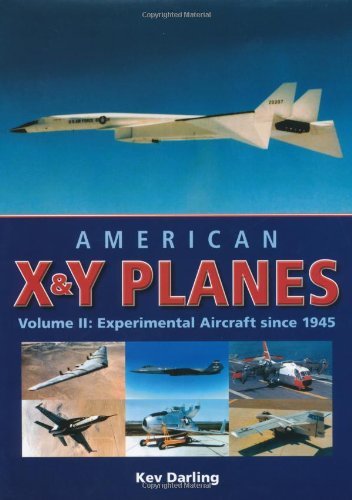
In 1945 the Allies returned home with much technical information from German research concerning jet engines and swept wings. Though the USAAF had already deployed an early batch of jet fighters, Lockheed P-80 Shooting Stars, to Italy in 1945, their centrifugal-flow engines had limited scope for further development compared with the axial-flow engines used by the Germans. Also, it was obvious that a new breed of airframes was needed to take advantage of the huge power increase offered by jet engines: the answer was the swept wing carefully coupled with a blended fuselage. This second volume of Kev Darling’s history of American prototype and experimental aircraft tells the full story of these fascinating aircraft, from the primitive jets of the immediate post-war period to the F-22 and F-23 stealth fighters that represent the pinnacle of modern warplane design.
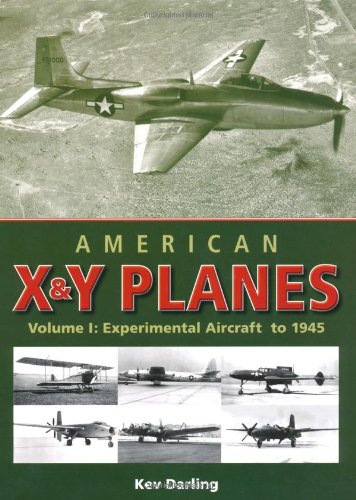
The world of experimental and prototype aircraft throws up many interesting and unusual machines, and the aircraft manufacturers of the USA were no exception. Within a few years of the Wright Brother’s first flight in 1903, World War I greatly accelerated the development of aircraft as the fighting machines of all sides were pushed to the limits to gain more speed, altitude and firepower. This book, the first of a two-volume history of the USA’s ‘X’ and ‘Y’ experimental planes from the earliest years of aviation to the present day, covers the period from the Wright Brothers to the end of World War Two. As well as famous names such as Curtiss, Northrop and Boeing, many long-forgotten manufacturers such as Loening and Thomas-Morse appear in these pages. The detailed text, supported by extensive illustrations throughout, gives a fascinating insight into an often-overlooked area of aviation history.
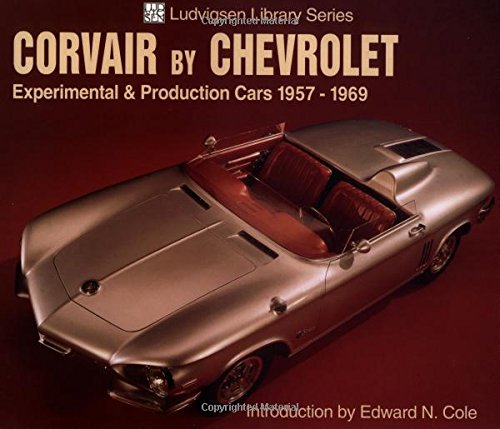
Introduction by Karl Ludvigsen. One of the most controversial cars ever made, Chevrolet’s Corvair is celebrated in this unique pictorial history. From his files on the Corvair – which he first road-tested in 1959 – Karl Ludvigsen presents a plethora of photos of the original ‘Holden’ prototypes on test and even a Corvair engine installed in a Porsche, its first running test bed. Photos of the production Corvairs down through the years are interspersed with wild and woolly prototypes and concept cars based on this unique rear-engined auto, the one whose unusual handling helped make Ralph Nader famous.
Ludvigsen, who worked at GM during much of the Corvair era from 1960 to 1969, reveals styling models and describes his own involvement with one of the handsomest sports prototypes ever designed, the Corvair Monza GT. It’s a feast for fans of the novel and endearing Corvair.”
British Experimental Combat
Triumph Experimental
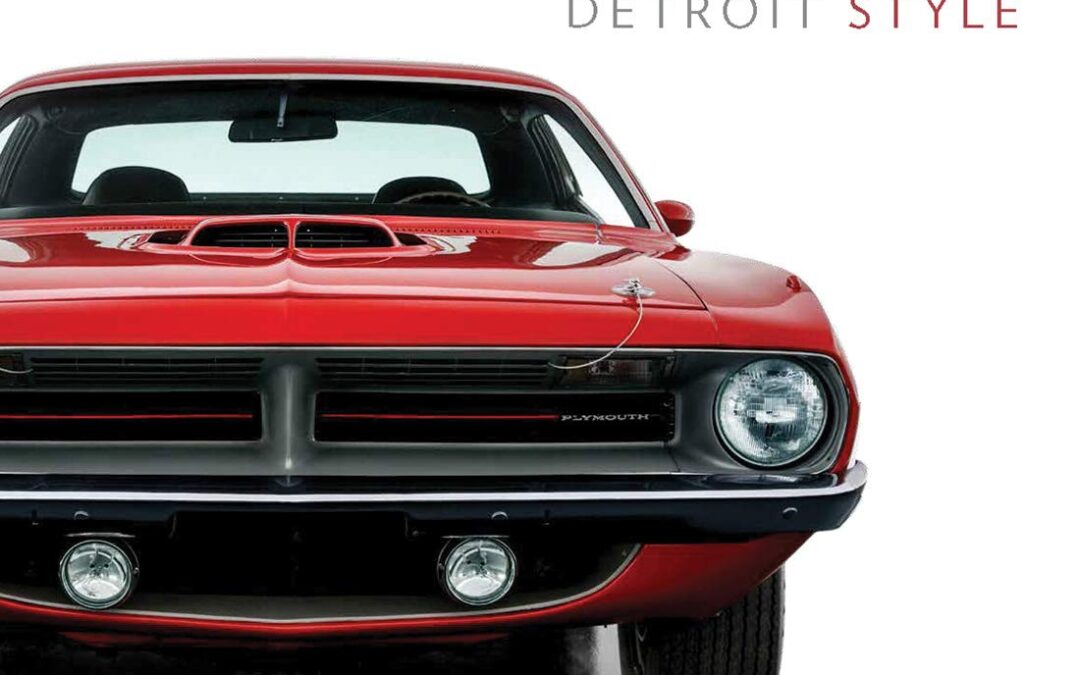
A dynamically illustrated exploration of 70 years of automotive design in the Motor City
Detroit, nicknamed Motor City, has always been a leader in car design. As the city became the center of the American automobile industry in the early 20th century, its studios became incubators for new ideas and new styles. This volume highlights the artistry and influence of Detroit designers working in the industry between 1950 and the present day, giving readers a sumptuously illustrated opportunity to discover the ingenuity of influential (and surprisingly little-known) figures in postwar American car design. Detroit Style showcases 12 coupes and sedans, representing both experimental cars created solely for display and iconic production models for the mass market. Dozens of design drawings and images of studio interiors—along with paintings and sculptures—highlight the creative process and dialogue between the American art world and car culture. These materials in addition to interviews with influential figures in car design today bring new insights and spark curiosity about the formative role Detroit designers have played in shaping the automotive world around us, and the ways their work has responded to changing tastes, culture, and technology.
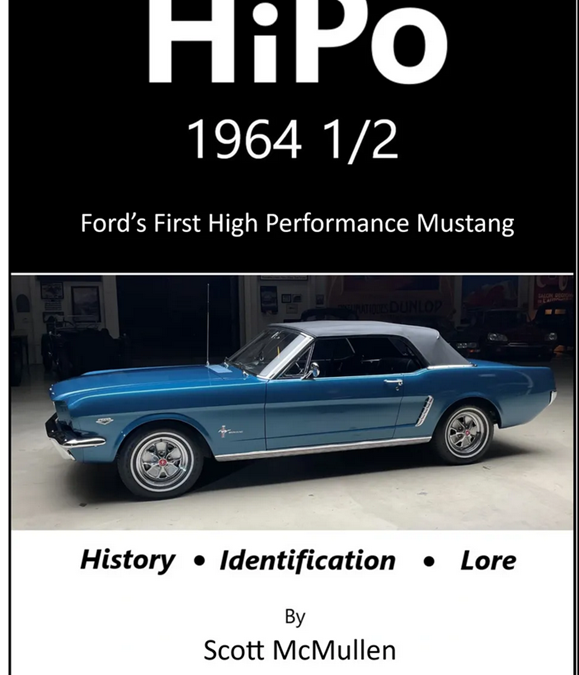
Introducing “HiPo 1964 1/2 Ford’s First High Performance Mustang – History, Identification, Lore”. Dive into the thrilling world of Ford’s iconic 64 1/2 K code Mustang with captivating stories and stunning visuals. A must-have for every auto enthusiast!
The authoritative guide to Ford’s original street legal race-bred Mustang and one of the world’s rarest collector cars, whose fascinating story is sure to entertain a wide range of automotive enthusiasts – not just Mustang fans – covering history, early prototypes, development/testing, production, characteristics/parts, restoration/preservation, and much more. (Hardcover, 347 pages, 157 photos/images both color and black & white.) By Scott McMullen with foreword by Jay Leno.
“HiPo 1964 ½ Ford’s First High Performance Mustang” focuses on one of Ford’s rarest production cars – rarer than the 1965-1966 Shelby GT 350 and the only option for Mustang performance buffs prior to August 1964. Also known as HiPos or K codes, most enthusiasts are aware of the 65-66 models, but little about the 64 ½ HiPo Mustangs, has been available. The 64 ½ cars were the original embodiment of the street legal race-bred Mustang. Their fascinating story is sure to entertain a wide range of automotive enthusiasts – not just Mustang fans.
The book includes rare, and in some cases, never-before-published pictures of early High Performance Mustang prototypes and pre K code mustangs production cars. Included are details of experimentation and production along with in-depth discussions of how research and development progressed through the start of 64 ½ K code production up to the start of 65 production. Also explored is the lore of these classic muscle cars and the test drivers, like Dan Gurney, who helped wring them out.
This information is invaluable to the collector and automotive performance enthusiast alike. Even the most knowledgeable Mustang aficionado will find new information, some of which will challenge old notions and lore that has been told through generations of Mustang fans the world over. The book goes on to present tips for preserving and restoring a 64 ½ HiPo Mustang. It further delves into characteristics of an authentic 64 ½ K code Mustang along with how they changed through the few weeks in 1964 that these ultra rare cars were produced.
Hardcover, 347 pages, 157 photos/images both color and black&white.
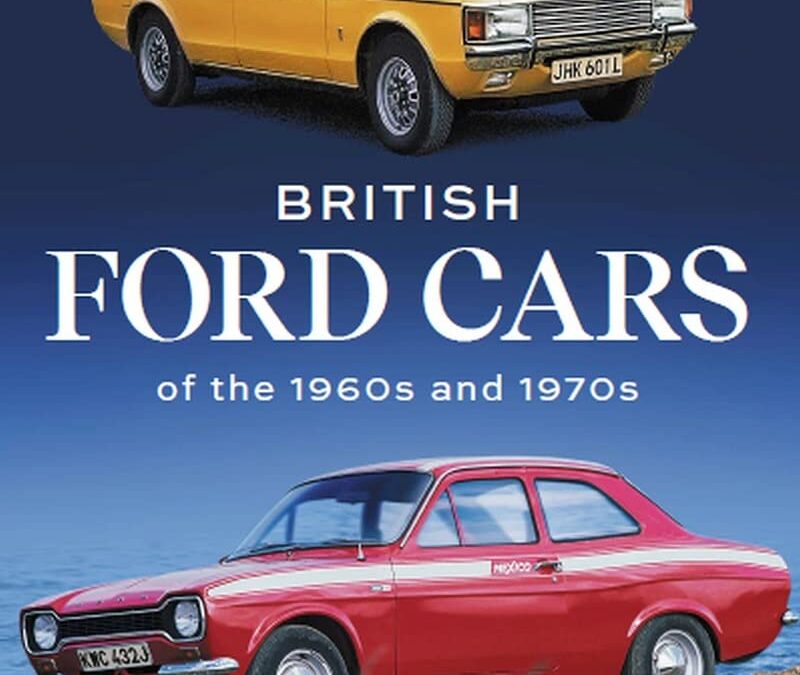
The 1960s and 1970s were a pivotal period for Ford in Europe and, seen from a British perspective, were a time of experimentation and exploration. At the start of the 1960s Ford had models aimed at just two market sectors – small family saloons and large family saloons – but by the end of the 1970s they were represented in no fewer than five areas of the market with small hatchbacks, small saloons, medium saloons, sporty coupés and large saloons. And they had overtaken all rivals in Britain to be the best-selling manufacturer with (since 1967) the Cortina as the best-selling car. With over 270 photographs, this book details: the Ford company structure, businesses and key locations throughout the two decades; the factors influencing model design, engineering, styling and interior; specification and performance tables; market reception and sales; special editions, models produced overseas and conversions and finally, helpful buying advice for each model.
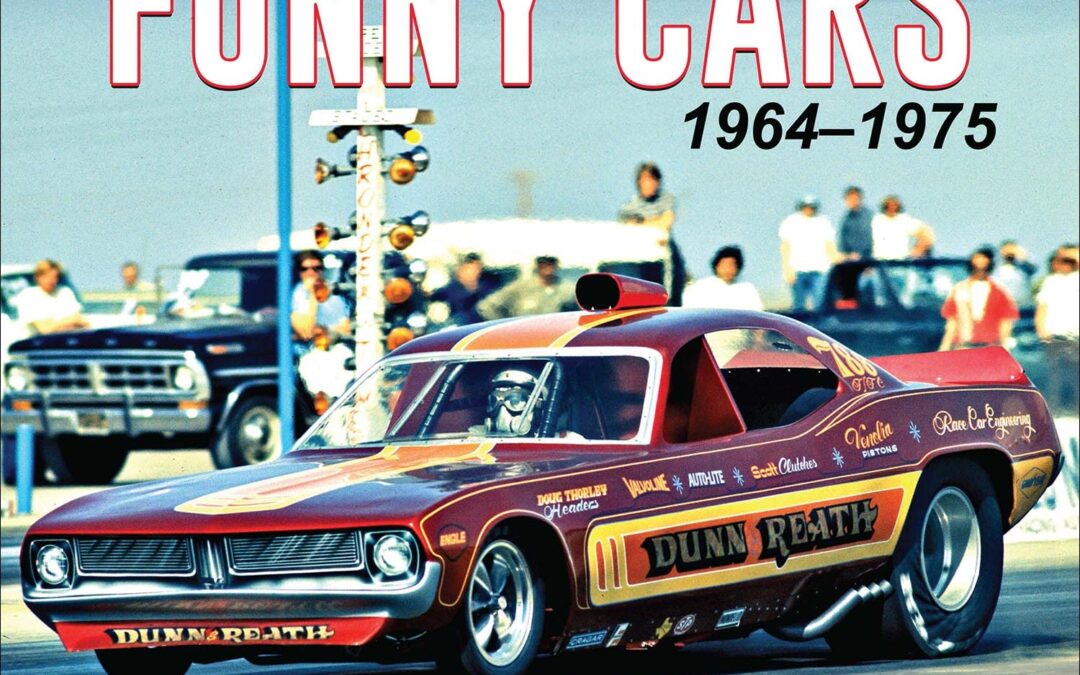
Blast through the evolving early years of Funny Car drag racing when doorslammers morphed into flip-top rail monsters. The era features historic mounts from Arnie “the Farmer” Beswick, Al “the Flying Dutchman” Vanderwoude, “Jungle” Jim Liberman, Don “the Snake” Prudhomme, and many more!
The metamorphosis from doorslammers to fiberglass flip-top dragsters wasn’t ever a cut and dry plan. As drag racers pushed the envelope for more speed, a series of innovations quickly evolved and refined the genre.
Funny Cars cut their teeth in the A/Factory Experimental (A/FX) and Experimental Stock (X/S) classes in 1964 with the 2-percent Mopars that looked funny with their axles moved forward. However, it was Jack Chrisman’s supercharged, nitro-fueled 427 Supercharged Factory Experimental (S/FX) Comet Caliente that trailblazed the class on which the NHRA turned its back and the AHRA fully accepted. Showmanship became the draw in the dawn of Funny Car with half-track burnouts and flame-throwing headers that packed fans five deep at the fence.
By 1969, the NHRA had no choice but to create a class for these nitro-breathing, flip-top-sporting rail bruisers, indoctrinating the Funny Car (F/C) class at the Winternationals with 40 cars vying for 16 places in the field. The rest, as they say, is history!
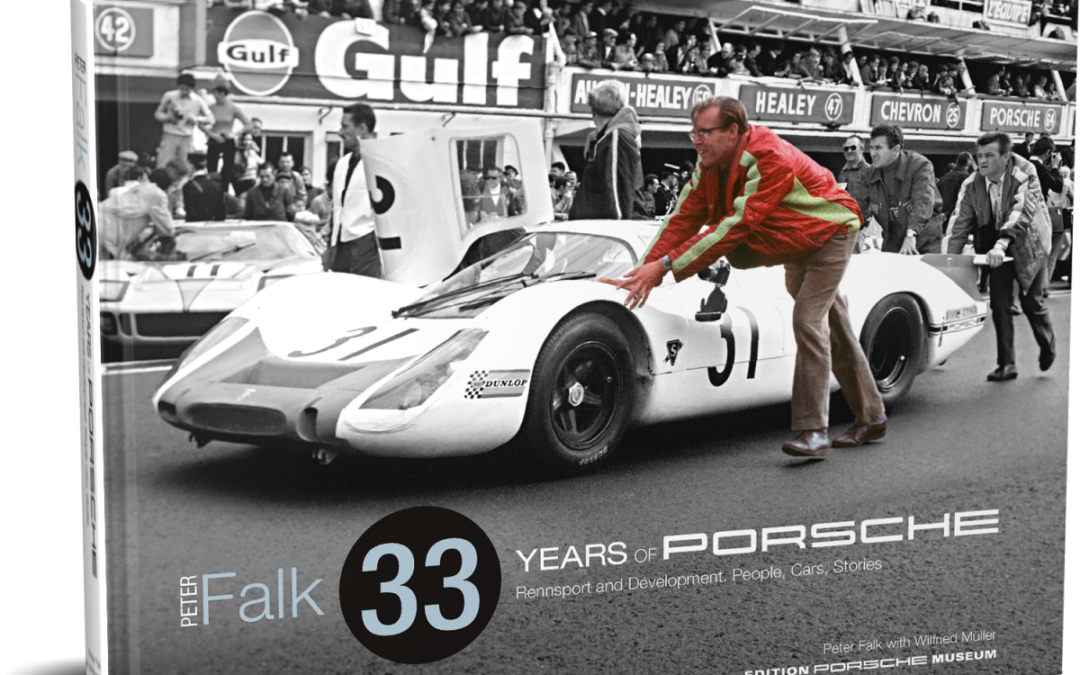
Peter Falk and Porsche, 33 years of passion and devotion: As their race director and one of the leading figures in their experimental department, Peter Falk contributed significantly to the character of the sports cars from Stuttgart-Zuffenhausen – both on the race track and on the road.
From the first 901 right through to the very last air-cooled Type 993, every Porsche 911 bears the signature of Peter Falk. He joined the company in 1959 and quickly rose through the ranks to head various testing departments. In the mid-sixties, Falk also took over the tactical and technical leadership of the factory’s “Rennsport” team. In 1981, he was appointed as race director and led Porsche throughout its most successful era of competition. “His” team won at Le Mans, became World Sports Car Champions, conquered the Paris-Dakar Rally, and was victorious in Formula 1 with the TAG Turbo engine.
In this book, Peter Falk tells of his years with Porsche. A highly respected person in the world of engineering, he relates how it all began at Porsche – when race drivers and engineers huddled together in a shepherd’s hut at Weissach to discuss suspensions, what the Porsche crew experienced during endless testing adventures in both the Arctic Circle and the Sahara, how the race cars at Le Mans roared to the start over country roads, and how a test drive with a Porsche 908 almost cost him his life. He shares his views on every Porsche race car, from the 904 Carrera GTS to the 962C, and describes the race drivers who competed during his reign: Hans Herrmann, Jacky Ickx, Vic Elford, Derek Bell, Hans-Joachim Stuck and Jochen Mass to name just a few. Falk provides a good, long look into the inner workings of Porsche.
Peter Falk shared his personal Porsche stories and fascinating insights with the author Wilfried Müller. The images in this book come from Peter Falk’s private collection, from the Porsche Historical Archive in Stuttgart-Zuffenhausen, and from the vast cache at McKlein Photography. Along with the contributions from former colleagues and race drivers, these images and stories give an in-depth portrayal of Peter Falk’s 33 years with Porsche.
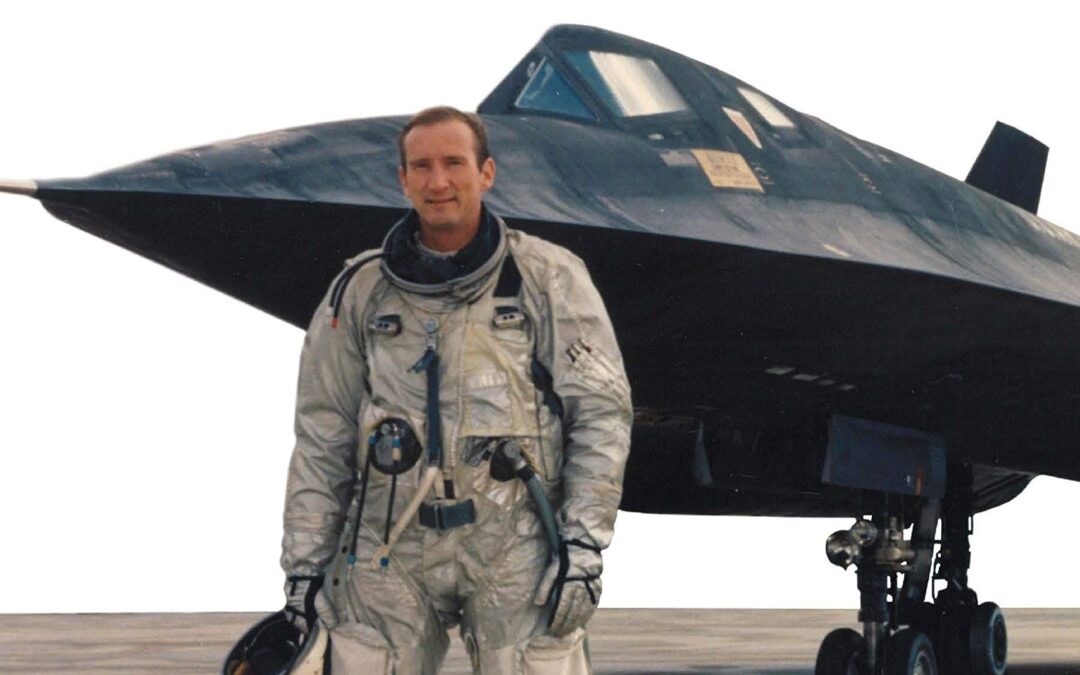
On December 22, 1964, at a small, closely guarded airstrip in the desert town of Palmdale, California, Lockheed test pilot Bob Gilliland stepped into a strange-looking aircraft and roared into aviation history.
Developed at the super-secret Skunk Works, the SR-71 Blackbird was a technological marvel. In fact, more than a half century later, the Mach 3–plus titanium wonder, designed by Clarence L. “Kelly” Johnson, remains the world’s fastest jet.
It took a test pilot with the right combination of intelligence, skill, and nerve to make the first flight of the SR-71, and the thirty-eight-year-old Gilliland had spent much of his life pushing the edge.
In Speed one of America’s greatest test pilots collaborates with acclaimed journalist Keith Dunnavant to tell his remarkable story: How he was pushed to excel by his demanding father. How a lucky envelope at the U.S. Naval Academy altered the trajectory of his life. How he talked his way into U.S. Air Force fighters at the dawn of the jet age, despite being told he was too tall. How he made the conscious decision to trade the security of the business world for the dangerous life of an experimental test pilot, including time at the clandestine base Area 51, working on the Central Intelligence Agency’s Oxcart program.
The narrative focuses most intently on Gilliland’s years as the chief test pilot of the SR-71, as he played a leading role in the development of the entire fleet of spy planes while surviving several emergencies that very nearly ended in disaster.
Waging the Cold War at 85,000 feet, the SR-71 became an unrivaled intelligence-gathering asset for the U.S. Air Force, invulnerable to enemy defenses for a quarter century.
Gilliland’s work with the SR-71 defined him, especially after the Cold War, when many of the secrets began to be revealed and the plane emerged from the shadows—not just as a tangible museum artifact but as an icon that burrowed deep into the national consciousness.
Like the Blackbird itself, Speed is a story animated by the power of ambition and risk-taking during the heady days of the American Century.
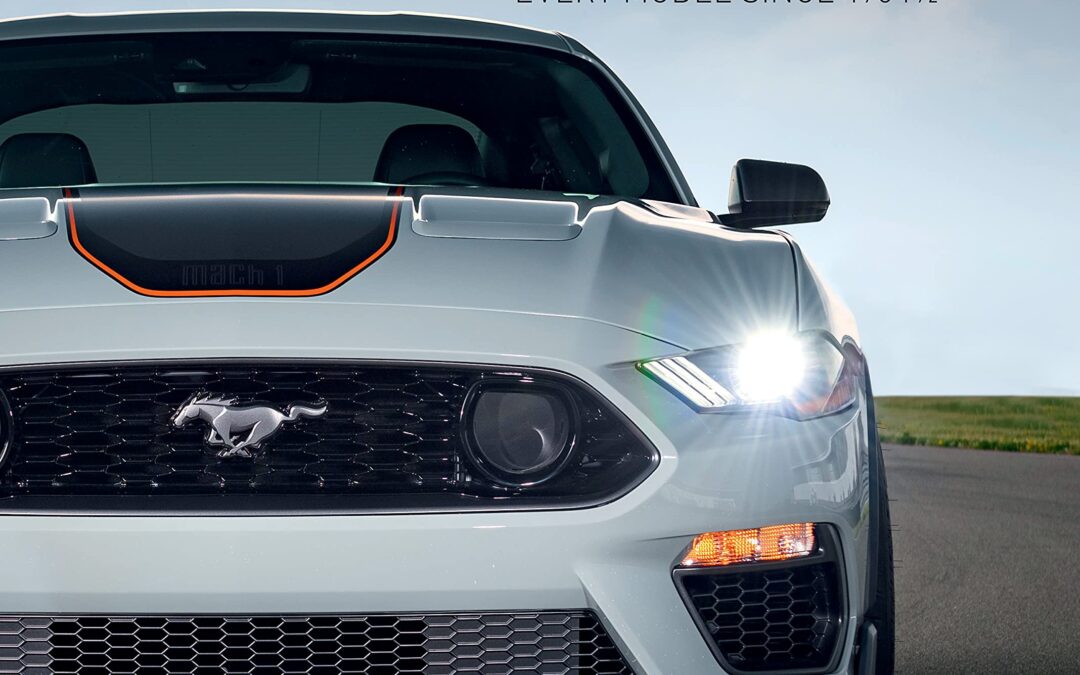
REVISED & UPDATED 2021 EDTION
This lavishly illustrated, officially licensed reference work walks you through Mustang’s nearly 60 years of continuous production—a rich and varied history nearly unmatched in the automotive world.
Ford’s Mustang is America’s most iconic pony car. According to many, it is the only vehicle that really actually deserves the title “pony car.” From the first six-cylinder Mustang of 1964-1/2 through fire-breathing, world-beating Boss and Shelby versions of the 1960s and early ’70s, to today’s Mustang Mach 1 and Shelby GT500, The Complete Book of Ford Mustang offers an in-depth look at the prototypes and experimental models, the anniversary and pace cars, and the specialty packages for street and competition driving that have made the Mustang an automotive legend for nearly 60 years.
Created in cooperation with Ford and providing extensive details, specifications, and photographic coverage, this book is the ultimate resource on America’s best-loved pony car. Any muscle-car enthusiast, motorsports fan, or car collector will want this book in their collection.

The W114 and W115 models were enormously successful for Mercedes-Benz, and their sales in nine years of production between 1967 and 1976 almost equalled the total of all Mercedes passenger models built in the 23 years between 1945 and the time of their introduction in 1968.
There were many reasons for this success, but perhaps the most important was that Mercedes expanded the range to include a simply vast amount of variants including four-cylinder and six-cylinder petrol engines, four-cylinder diesels; saloons, coupes and long-wheelbase models.
This book features the story of the design and development of the W114 and W115 ranges. It gives an extensively illustrated look at the special bodywork on both standard and long-wheelbase models, and includes full technical specifications, including paint and interior trim choices. There is a chapter on the special US variants. Production tables and model type codes are given as well as the Experimental Safety Vehicles developed from these cars. Finally, there is a chapter on buying and owning a 114- or 115-series Mercedes.
Today, the W114s and W115s have a strong enthusiast following around the world. They are appreciated as survivors from a simpler age, as the cars that laid the foundations for the hugely successful ranges of mid-sized saloons that followed from Mercedes, and because of the sheer diversity of their types and specifications. No enthusiast of these fine models will want to be without this book.

“Every Coupé from Mercedes-Benz has always embodied elegance on four wheels, whether today, 40 years ago or a century ago; our coupés are legends of each and every era in which they were built.” – Michael Bock, Head of Mercedes-Benz Classic
In the very beginning, the automotive industry was dominated by open-top vehicles whose body shapes were very much based on the horse-drawn carriage, there were open and closed carriages and then there was the Coupé. Mercedes-Benz is and has always been a trendsetter, not only in terms of technology, but also in design but what must never be underestimated was the idea of moving away from the ‘classic Coupé saloon style body but also what had become their corporate identity, the Mercedes-Benz, radiator grill.
With over 300 photographs and illustrations, this first volume of the Mercedes-Benz Coupe includes an overview of the early days of ‘Sports-Car’ design and the influences of aerodynamics on design evolution. The book discusses the early protagonists at Daimler-Benz and how they influenced design of the Coupe shape. It shows how the Racing Coupe influenced what became the production Sport Coupe, and covers the experimental and one-off prototypes and the continuation of the Super Sport Light concept through the ‘S-Class’ range.
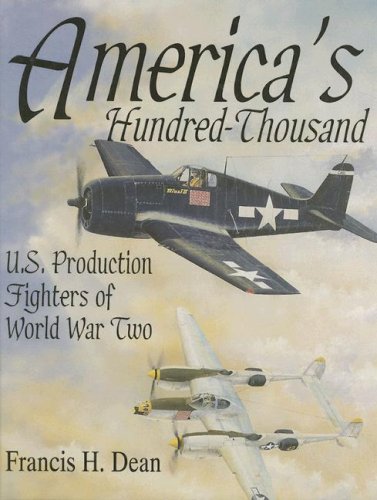
America’s Hundred Thousand covers in detail the eleven U.S. fighter aircraft types produced just before and during World War II – with a combined production total of just over 100,000 aircraft. Covered are the Army Lockheed P-38 Lightning, P-39 Airacobra, Curtiss P-40 Tomahawk/Kittyhawk/Warhawk, P-47 Thunderbolt, North American P-51 Mustang, Northrop P-61 Black Widow, and the Navy F2A – Buffalo, F4F – Wildcat, F4U – Corsair, and F6F – Hellcat fighters. The text is supplemented by more than 650 photographs, and 200 tables and graphs. Fighter production figures are also included. After an introduction of each type, a heavily illustrated overview of earlier inter-war production from 1920-on, along with a discussion and illustration of wartime experimental types, is provided. A lengthy section considering several technical factors affecting fighter performance follows. These include engine models, supercharger types, propellers, aerodynamic thrust, lift and drag, aircraft weight, balance, stability and control, and armament. America’s Hundred Thousand also provides details of each U.S. World War II production fighter in terms of models and changes, numbers produced, and major engine and aircraft performance aspects – in tabular and graphical form – details of weights, discussion of handling qualities and general comments, along with detailed descriptions containing many illustrations of aircraft structures and systems showing the technology of that time. In addition a comprehensive week-to-week and month-to-month chronology of development and wartime combat operational life for each fighter is provided, including many photos. This study concludes with comparisons of the eleven types in terms of program milestones, aircraft drag, power available at various altitudes, speed, climb, rolling and turning, acceleration, and diving performance, as well as general evaluations by World War II pilots.

Metal fabricators of every ilk, whether they’re working on race cars, experimental aircraft, or custom motorcycles, will benefit from this updated guide to top-quality welding. Performance Welding demonstrates the newest fabricating techniques and covers the latest in welding equipment. This complete guide written by NASA welding consultant Richard Finch helps a fabricator select the proper equipment, prepare jigs, and effectively weld 4130 steel, stainless steel, aluminum, and magnesium. It also covers plasma cutting, the technique used extensively on Monster Garage that has revolutionized metal working. 2nd ed.

When most of us think of Area 51, we think of aliens, UFOs, and controversial government cover-ups. It’s easy to forget that, since the mid-1950s, the United States’ famed extension of Edwards Air Force Base has served as a top-secret CIA testing ground for many of the most groundbreaking advancements in American military aviation technology. In Secret Jets, author and military historian Bill Yenne offers the first fully illustrated chronology of Area 51’s most famous aircraft projects, including Lockheed’s U-2 “Dragon Lady” and SR-71 “Blackbird” reconnaissance planes, drones ranging from the early Lockheed D-21 to the modern-day General Atomics MQ-1 Predator, and the famous F-117 Nighthawk stealth fighter produced by the Have Blue program during the 1970s. Each project is given its own fascinating chapter illuminating the aircraft’s development at this famed location. But beyond the aircraft themselves, Secret Jets also covers a handful of the many classified experimental programs carried out at Area 51 over the years, such as Have Doughnut, Have Ferry, and Have Drill – secret undertakings that successfully reverse-engineered such enemy aircraft as the Russian MiG during the Cold War. Presented in beautiful hardcover format and illustrated with historic color and black-and-white photographs, diagrams, and maps, this book reveals Area 51 for what it truly is: a clandestine area for the United States’ most cutting-edge technological innovators in military aviation.
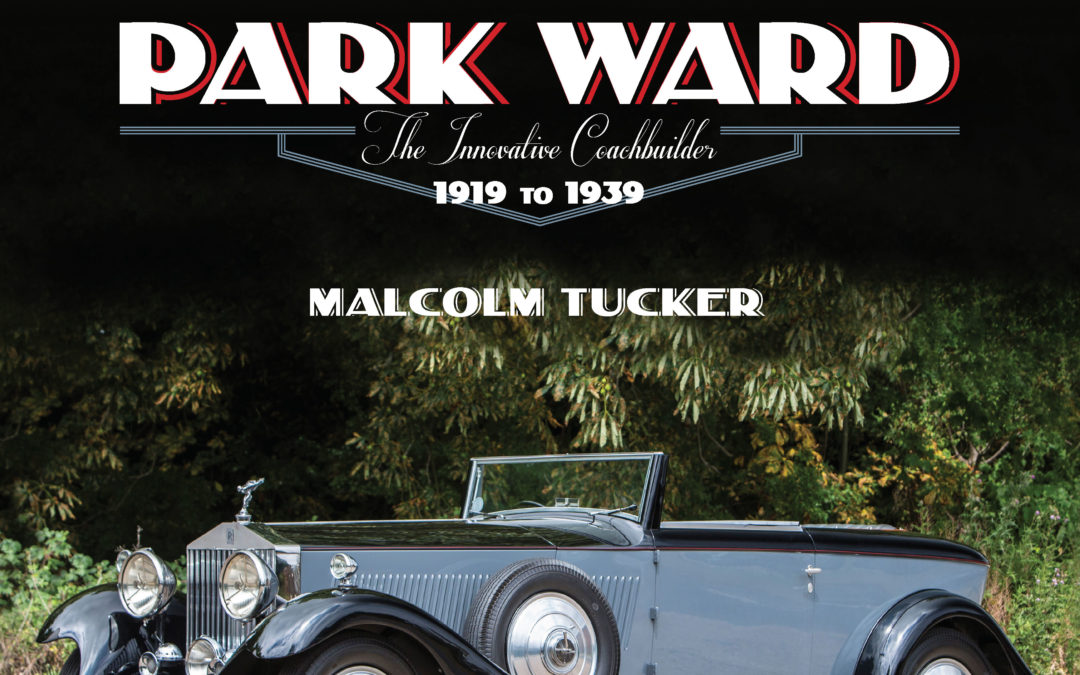
A major three-volume work on the pre-war history and cars of the great British coachbuilder, Park Ward. The company was the most prolific coachbuilder on Rolls-Royce and Bentley chassis, ultimately completing over 4,300 cars. Volume I and II is the story of Park Ward & Co Ltd. – the men who worked there and the company’s growing relationship with Rolls-Royce Ltd. A photographic record of all the Rolls-Royce models from Silver Ghost to the Wraith that carried Park Ward coachwork is included, along with chapters on the W. O. Bentley cars, and the Rolls-Royce and Bentley experimental cars with Park Ward coachwork. The Derby-built Bentleys follow, supported by chapters on the London Motor Show cars, coachwork on marques other than Rolls-Royce and Bentley, and examples of Park Ward advertising literature and catalogues. An appendix contains a series of articles written by ‘Bill’ Ward, the company founder’s son, entitled ‘The Art and Evolution of Coachbuilding’. Volume III contains extensive tables detailing each of over 3,000 pre-war Park Ward-bodied Rolls-Royce and Bentley, as well as a listing of over 1,000 Park Ward bodies on other marques. In addition, and rarely seen before, there are over 700 sales order pages extracted from Park Ward’s Finishing books.
Author Malcolm Tucker is a past-Chairman of the Rolls-Royce Enthusiasts’ Club, and is an established Rolls-Royce and Bentley historian, writer and ‘after dinner’ speaker. This will be his fourth book for Dalton Watson Fine Books. Malcolm has owned thirty-five Rolls-Royce or Bentley cars, including, for forty-six years, a 1928 20hp faux cabriolet by Park Ward.